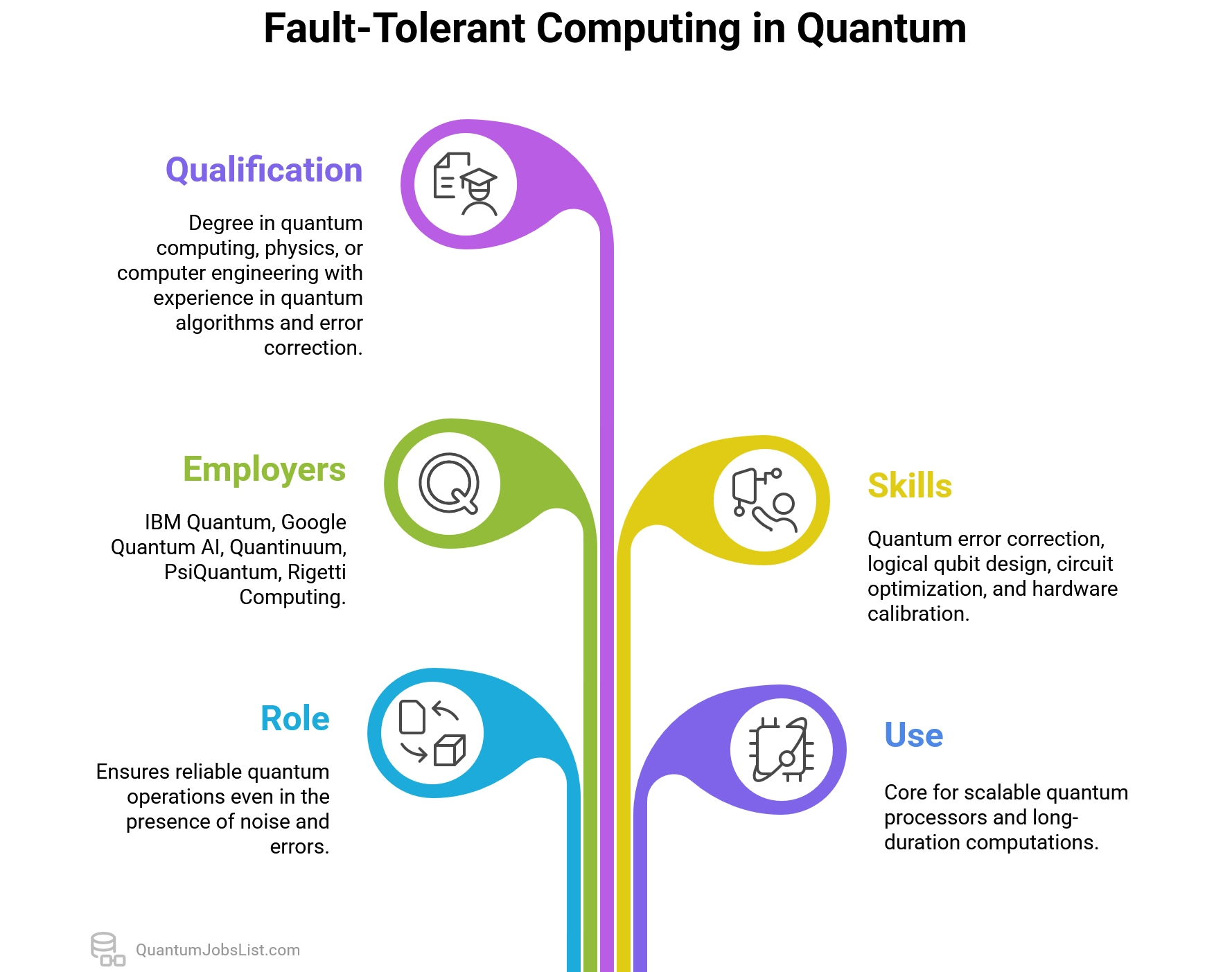Fault-Tolerant Computing Jobs













































Search jobs
Know the Basics
Building quantum computers that can keep running correctly even when individual parts make mistakes, like a team where if one player fumbles; others immediately cover so the game continues smoothly.
What does a fault-tolerant quantum computing researcher do?
They design systems and algorithms that continue working correctly even when qubits fail or produce errors. You will analyze error rates, design and implement error correction protocols, simulate large-scale fault-tolerance architectures, and partner with hardware teams to learn error correction on working quantum processors. The goal is to unlock practical applications on quantum computers by ensuring the technology is reliable.
How much do fault-tolerant computing specialists earn?
Entry-level researchers typically make $85,000-115,000 a year. Experienced fault-tolerance specialists with published papers earn $120,000-170,000 a year, while senior scientists leading fault-tolerance research programs at major tech companies or national labs can earn $180,000-240,000+ a year, especially those contributing to breakthrough demonstrations like Google's recent below-threshold error correction results.
The question isn't if quantum computing will transform business, but who will lead the transformation. Whurley, Strangeworks Founder
What background do I need for fault-tolerant quantum computing roles?
Most positions require a PhD in physics, computer science, or electrical engineering with a focus on quantum information. You must have a strong foundation in quantum error correction theory, knowledge of quantum gates and circuits, and programming skills for simulation. Work on threshold theorems, concatenated codes, and practical error correction implementations will position you well for the role.

Why is fault tolerance the biggest challenge in quantum computing?
Qubits are incredibly fragile, they lose their quantum properties in microseconds to seconds. Every operation introduces errors, and without correction, these errors accumulate and ruin calculations. Fault-tolerant quantum hardware requires high fidelity operations, proper microwave hygiene, and proper packaging. Practical quantum computers will require sophisticated error correction that runs continuously; otherwise, reliable operations will be impossible to perform.
We must be clear that when it comes to atoms, language can be used only as in poetry. Niels Bohr, Physicist
Which organizations are leading fault-tolerant quantum computing research?
Google Quantum AI recently achieved below-threshold error correction, which is a huge milestone. IBM Quantum is developing a clear roadmap toward building fault-tolerant systems, while Microsoft, Amazon AWS, and quantum error correction startup Riverlane are also active in this space. Fault-tolerant quantum computing research is also conducted in leading universities like Yale, MIT, and Caltech, as well as in Oak Ridge and Los Alamos National Labs.
How is fault-tolerant computing different from regular quantum computing?
Regular quantum computing runs algorithms directly on noisy qubits and hopes the calculation finishes before errors accumulate. Fault-tolerant computing is comprehensive as it encodes one logical qubit into many physical qubits and performs constant error checking and correction in real time. Imagine the difference between walking a tightrope unsupported and walking one with a safety net that catches and resets you the instant you slip.

.svg)

